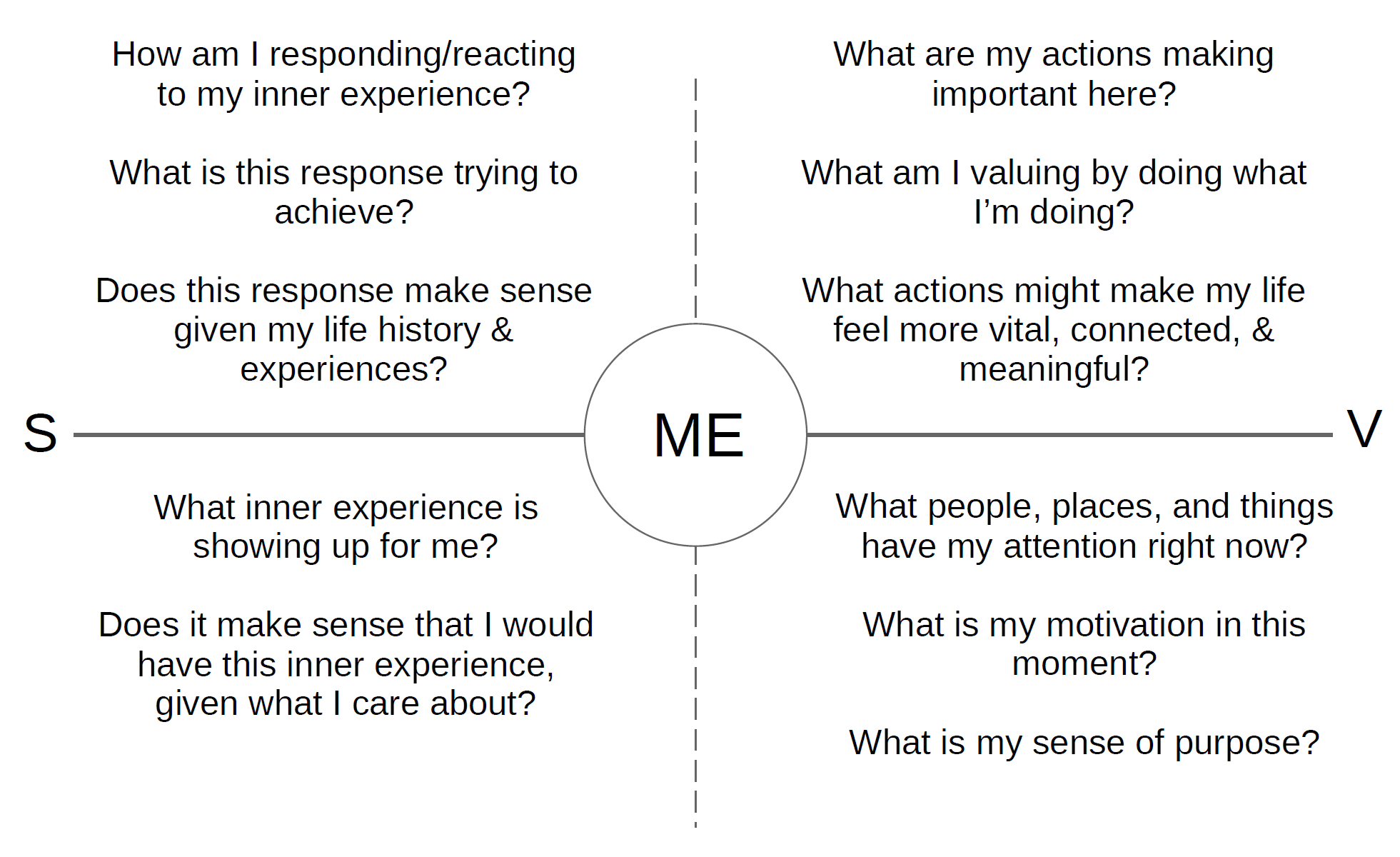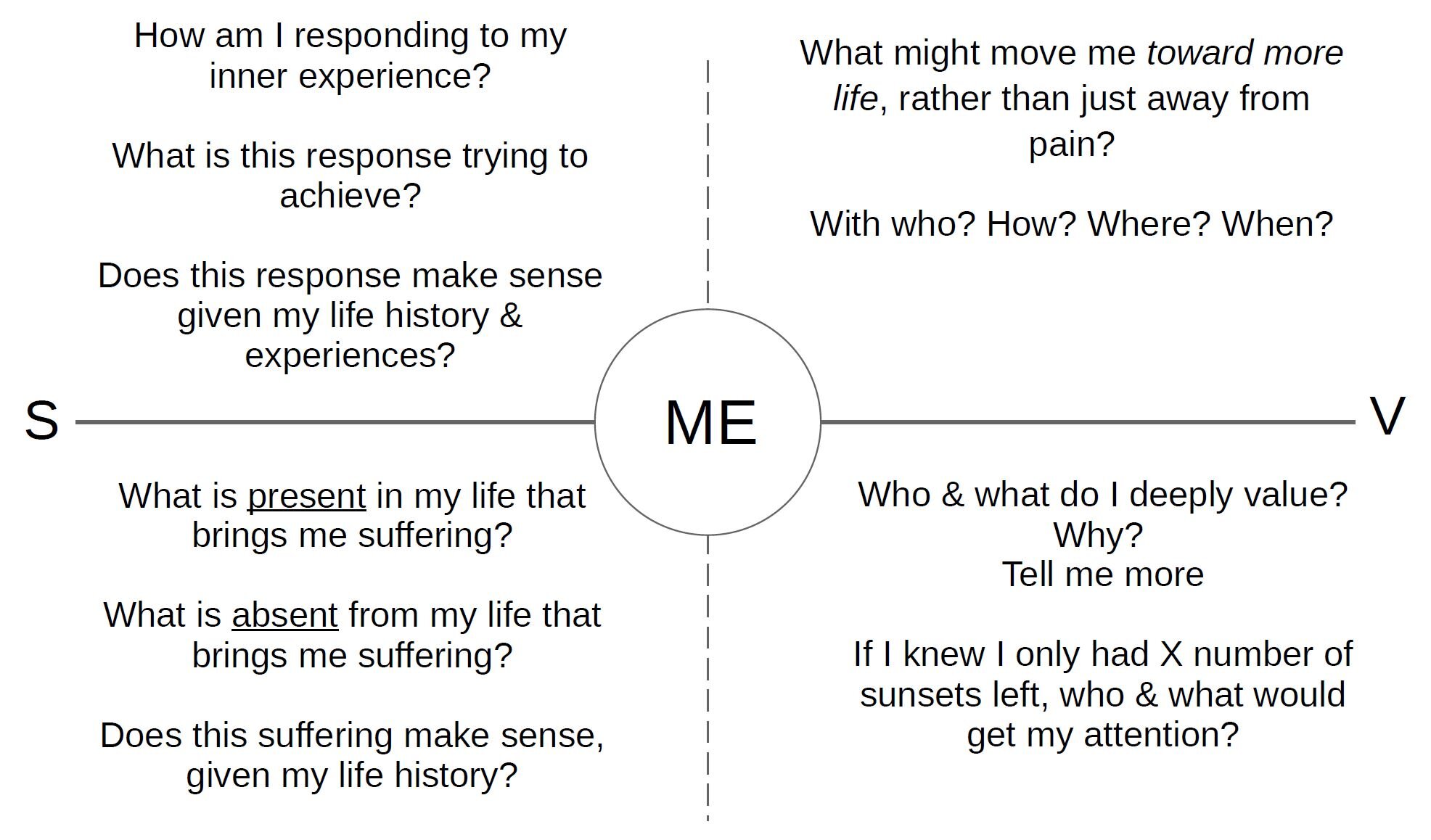Working with Values Through the Matrix
Values work is one of the hallmarks of Acceptance & Commitment Therapy and often one of the characteristics that sticks out to clinicians new to the model. Working and talking with clients about what they deeply care about—my god!—how exhilarating it can be.
The promise of the ACT Matrix is that we begin the initial work with who and what matters to the client, setting that as central in the therapy, then frame what the client comes to therapy thinking is the “central issue” as simply an obstacle to what matters. See this post on how to set up the matrix for the first time to learn more.
However, many clinicians struggle with taking that beginning magic of setting up the matrix and turning it into a continuing conversation about what matters. There are a few things that we need to keep in mind to enhance our work with values:
“Values” or “Valuing” is not one of the six core processes of the ACT Hexaflex. Values Clarification is the core process that is often shortened to just “Values” on the diagram that you’ll see in every book. “Valuing” can be covered by the process of committed action. This means that in our work we are helping clients discover, clarify, and elaborate on their values. We help them clarify what matters, in the way that we clarify an overhead projector by turning the focus knob until it becomes clear as crystal (often more clear than we thought possible). We help clients clarify what matters to them in the same way that we clarify a gemstone, making it shine as brilliantly as possible.
Values work in the context of the ACT Matrix is not constrained to the lower right hand quadrant. Newcomers to the matrix often make the mistake of thinking that this quadrant is values when it is not. Another misconception is thinking that all of the values work happens here in this one quadrant. This is not the case.
To deeply contact and clarify values within the matrix the work begins immediately and never stops. Values clarification happens across each quadrant of the matrix along every step of the way.
We explore the following questions:
Who & what are important to me? Why? When? How? Where?
What inner stuff shows up and gets in the way? How am I responding to that experience? If I had to be a person who experienced suffering, in what way would I like to hold onto it? Why? Where? With whom?
What can I be seen doing when this stuff shows up? Why? Where? When? How do I feel about that? How do I treat myself when that happens? How would I like to treat myself in these moments? Why? Where? When? With who?
What could I be seen doing to move toward what matters to me? How? Why? Where? When? With who? What do I make of that? What does it mean that I am capable of this? How do I treat myself when I do these things?
Center circle. How am I relating to what matters to me? How am I relating to my inner experience? How am I relating to my behaviors, both workable and unworkable? How am I relating to my self as a conscious self-directed human being?
I’ve created the two matrices below to enhance the context of values clarification. The horizontal axis is labeled S & V for the Survival—Vital Matrix (Quick Guide to the S—V Matrix Here), you can ignore this and use Toward & Away if you like.
In addition to these, I highly recommend the book Values in Therapy by Jenna LeJeune & Jason Luoma, you won’t regret it.


